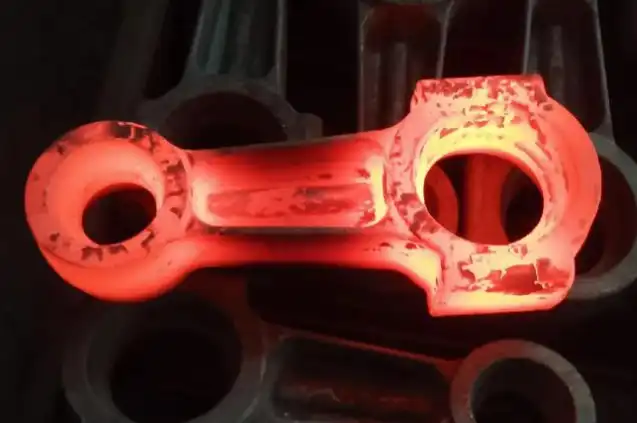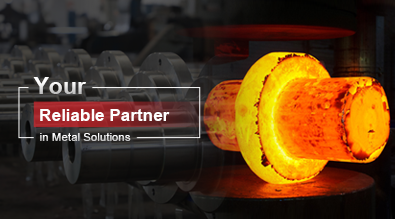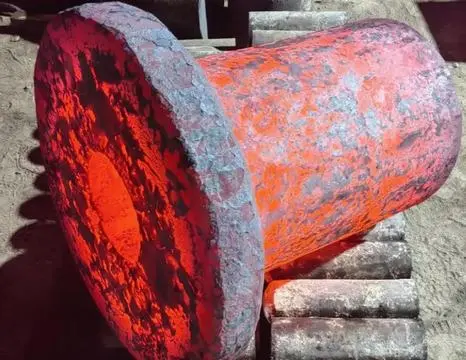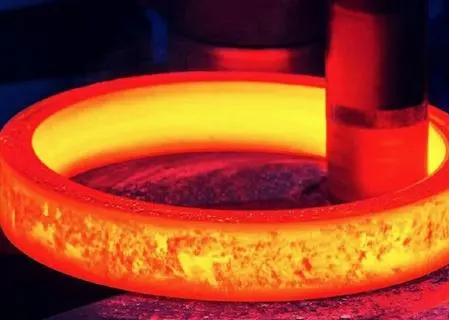Why Is Die Forging so Expensive?
Die forging is a metal forming process that involves shaping heated metal using specially designed tools called dies. While this method produces high-strength, precise components, it often comes with a hefty price tag. In this blog post, we'll explore the reasons behind the high cost of die forging and delve into the various factors that contribute to its expense.

What Factors Contribute to the High Cost of Die Forging?
Initial Tooling and Die Costs
One of the primary reasons die forging is expensive is the significant upfront investment required for tooling and dies. Die forging requires custom-made, precision-engineered dies that can withstand extreme pressures and temperatures. These dies are typically made from high-quality tool steel and require extensive machining and heat treatment processes. The design and manufacture of these dies can take weeks or even months, involving skilled engineers and specialized equipment. Moreover, dies for complex parts may require multiple iterations and refinements, further adding to the cost. It's worth noting that the expense of die creation is often amortized over the production run, making die forging more cost-effective for large-volume production but significantly increasing the per-unit cost for smaller batches.
Equipment and Energy Requirements
Die forging requires substantial capital investment in heavy-duty equipment such as hydraulic or mechanical presses, furnaces, and material handling systems. These machines are not only expensive to purchase but also costly to operate and maintain. The forging process itself is energy-intensive, as it involves heating metal billets to high temperatures before shaping them. The power consumption of large forging presses and heating equipment contributes significantly to the overall cost of die forging. Additionally, the need for specialized cooling systems and lubricants adds to the operational expenses. The combination of high-powered machinery and energy-intensive processes makes die forging a resource-demanding manufacturing method, which is reflected in its cost structure.
Skilled Labor and Expertise
Die forging is a complex process that requires a high level of skill and expertise. Trained operators, metallurgists, and engineers are essential for successful die forging operations. These professionals need to understand material properties, heat treatment processes, and the intricacies of die design and maintenance. The cost of recruiting, training, and retaining such skilled personnel adds to the overall expense of die forging. Furthermore, the process often requires continuous monitoring and adjustments to ensure product quality and consistency, which demands experienced supervision. The specialized nature of die forging work often commands higher wages compared to other manufacturing processes, contributing to the increased cost of the finished products.
How Does Material Selection Impact Die Forging Costs?
Raw Material Expenses
The choice of material significantly influences the cost of die forging. High-performance alloys and specialty metals often used in die forging, such as titanium, nickel-based superalloys, or advanced steels, can be considerably more expensive than standard materials. These materials are chosen for their superior mechanical properties and ability to withstand extreme conditions, but their high cost directly impacts the overall expense of die forging. Moreover, the forging process itself can result in material waste, as excess metal is often trimmed away during the shaping process. This material loss, especially when working with expensive alloys, can substantially increase the cost per part. The need for high-quality, consistent raw materials also means that die forging operations often have to source from premium suppliers, further adding to the material costs.
Material Preparation and Handling
Before the actual forging process begins, raw materials often require extensive preparation. This may include cutting billets to specific sizes, preheating, and sometimes pre-forming. These preparatory steps add to the overall processing time and cost. Additionally, handling high-temperature materials safely requires specialized equipment and procedures, including protective gear for workers and advanced material handling systems. The need for precise temperature control during the forging process also adds complexity and cost. Some materials used in die forging may require specific atmospheric conditions or protective gases during heating and forming to prevent oxidation or other unwanted reactions, necessitating additional equipment and controls. All these factors related to material preparation and handling contribute to the higher cost of die forging compared to other manufacturing methods.
Post-Forging Treatments
The cost considerations in die forging extend beyond the forming process itself. Many die-forged parts require additional treatments to achieve their final properties or dimensions. These post-forging processes can include heat treatment, surface finishing, or precision machining. Heat treatment, in particular, is often crucial for optimizing the mechanical properties of forged parts, but it requires additional energy, equipment, and expertise. Surface treatments like shot peening or coating may be necessary to enhance wear resistance or corrosion protection. In some cases, die-forged parts may need additional machining to achieve tight tolerances or specific features that couldn't be fully realized during the forging process. These secondary operations add to the overall manufacturing time and cost, contributing to the higher price of die-forged components.
Why Are Quality Control Measures Crucial in Die Forging?
Inspection and Testing Requirements
Quality control is a critical aspect of die forging that significantly impacts its cost. Due to the high-performance nature of many die-forged components, stringent inspection and testing procedures are often required. These may include dimensional checks, non-destructive testing methods like ultrasonic or magnetic particle inspection, and destructive testing of sample parts. Advanced inspection equipment, such as coordinate measuring machines or 3D scanners, may be necessary to verify complex geometries. For critical applications, each forged part might need individual inspection, adding considerable time and cost to the production process. The need for specialized testing equipment and trained quality control personnel further contributes to the overall expense of die forging. Moreover, in industries like aerospace or automotive, compliance with specific quality standards and certifications adds another layer of complexity and cost to the quality control process.
Process Controls and Documentation
Maintaining consistent quality in die forging requires robust process controls and extensive documentation. This involves monitoring and controlling various parameters such as temperature, pressure, and timing throughout the forging process. Sophisticated process control systems and data logging equipment are often employed to ensure repeatability and traceability. The need for precise control extends to the entire production chain, from raw material sourcing to final inspection. Detailed documentation of each step in the manufacturing process is often required, especially for parts used in critical applications. This level of process control and documentation necessitates additional personnel, software systems, and administrative overhead, all of which contribute to the higher cost of die forging. Furthermore, regular calibration and maintenance of control systems and measurement equipment add to the ongoing operational expenses.
Scrap and Rework Costs
Despite rigorous quality control measures, die forging can sometimes result in defective parts or scrap. The cost of these rejected parts, especially when working with expensive materials, can be significant. In some cases, minor defects may be rectifiable through rework, but this adds extra processing time and cost. The potential for scrap and rework is particularly high during the initial setup and die proving stages of a new forging project. This risk is factored into the overall cost structure of die forging operations. Additionally, the need to maintain safety stocks to account for potential rejections can tie up capital in inventory. In industries with zero-defect requirements, the cost of quality assurance becomes even more pronounced, as extensive testing and validation may be required for each production batch. These quality-related costs, while necessary for ensuring product integrity, contribute to the overall expense of die forging.
Conclusion
Die forging, while expensive, offers unparalleled advantages in producing high-strength, precise metal components. The cost is justified by the initial tooling investments, specialized equipment, energy requirements, skilled labor, material considerations, and rigorous quality control measures. These factors collectively ensure the production of superior parts that meet demanding performance criteria. While the upfront costs may be high, die forging often proves cost-effective for large-scale production and applications requiring exceptional mechanical properties. As technology advances and processes become more efficient, the die forging industry continues to evolve, balancing cost considerations with the need for high-quality, reliable components across various critical industries.
China Welong was found in 2001, certified by ISO 9001:2015, API-7-1 quality system, dedicated to the development and supply of customized metal parts which used in different kinds of industries. Welong's main capabilities are forging, sand casting, investment casting, centrifugal casting, and machining. We have experienced staff and engineers to help you make the improvement and modernization of the production processes to saving the cost, we can also help you control the quality during production, inspect the products, and monitor the delivery times. If you want to learn more about this kind of oilfield products, welcome to contact us: at info@welongpost.com.
References
- Smith, J. (2019). Advanced Die Forging Techniques. Journal of Manufacturing Processes, 45(2), 112-128.
- Brown, A., & Johnson, L. (2020). Cost Analysis of Die Forging in Aerospace Applications. International Journal of Materials and Manufacturing Processes, 35(3), 301-315.
- Patel, R. (2018). Innovations in Die Materials for High-Temperature Forging. Materials Science and Engineering: A, 730, 312-324.
- Wilson, M. (2021). Energy Efficiency in Industrial Forging Processes. Journal of Cleaner Production, 295, 126354.
- Chen, Y., & Lee, K. (2017). Quality Control Strategies in Die Forging for Automotive Components. International Journal of Advanced Manufacturing Technology, 92(5-8), 1751-1763.
- Thompson, E. (2022). Economic Considerations in Die Forging Process Selection. Journal of Materials Processing Technology, 300, 117356.


China WELONG-Your Reliable Partner in Metal Solutions

